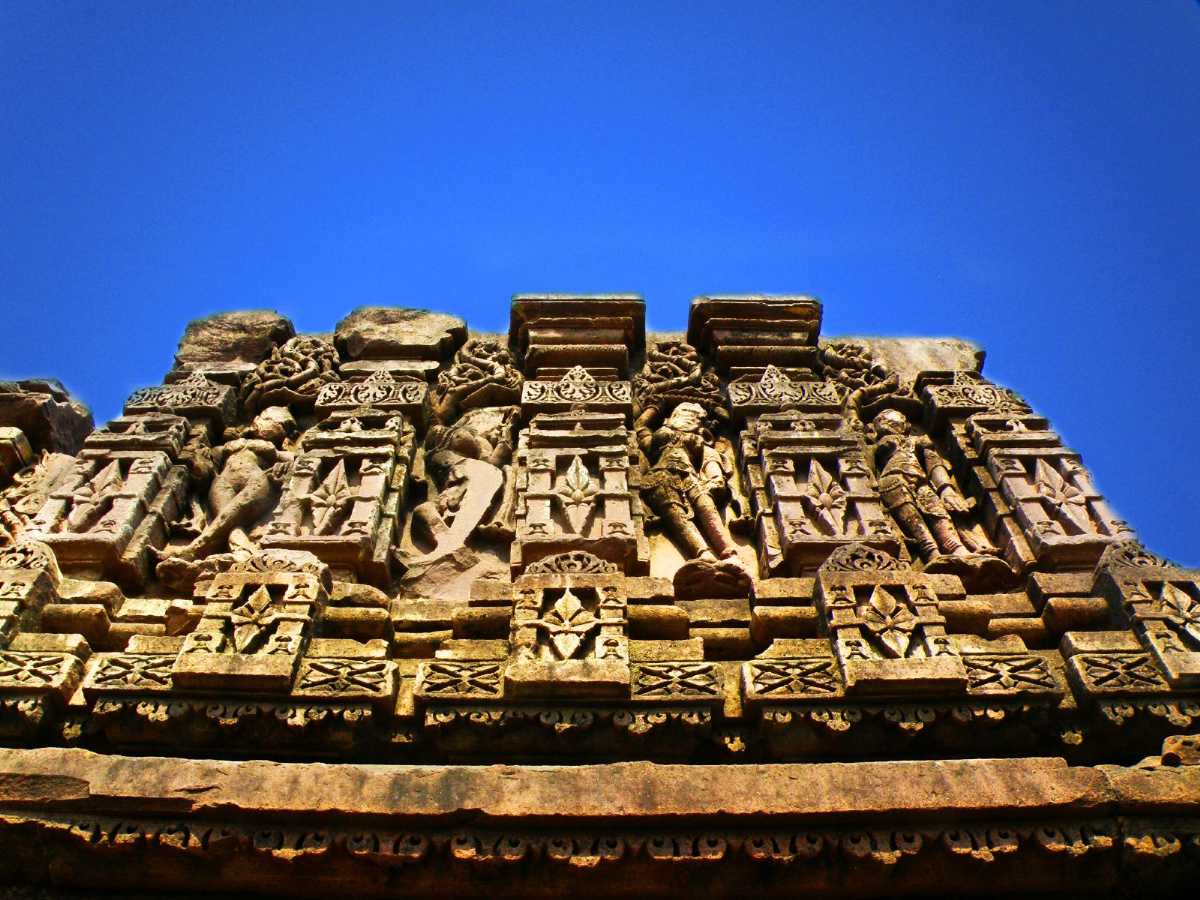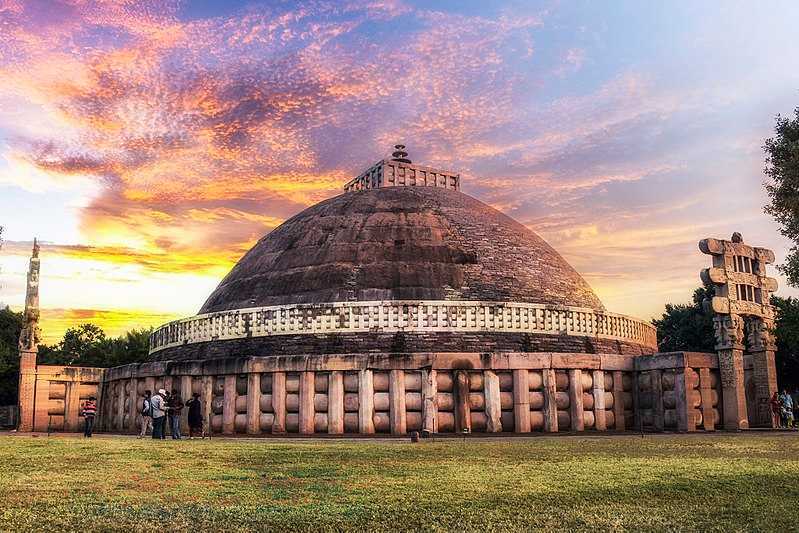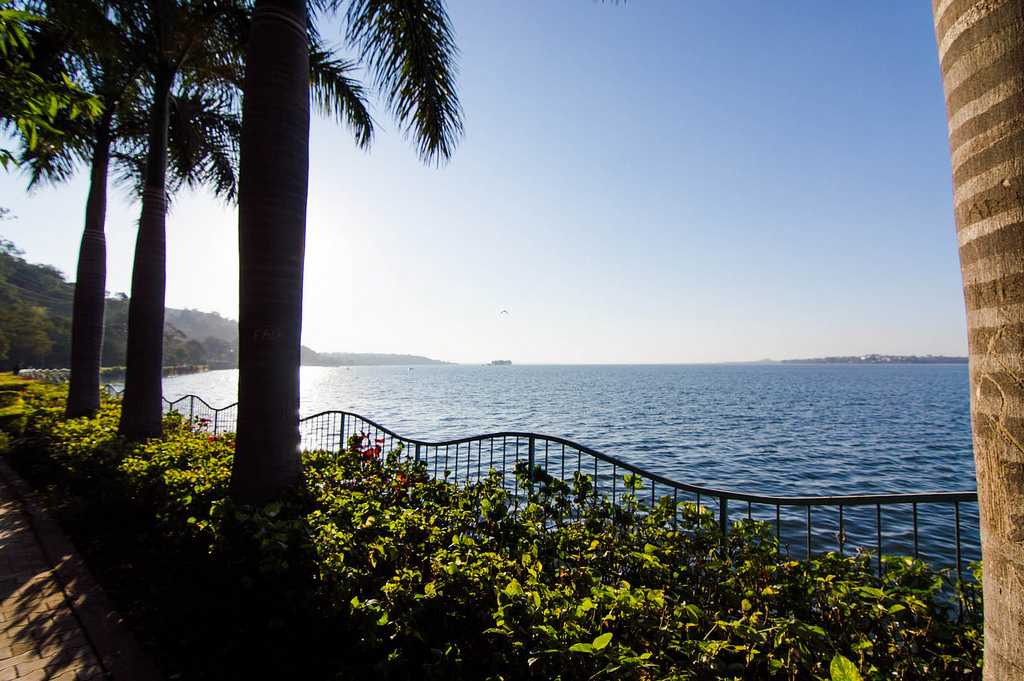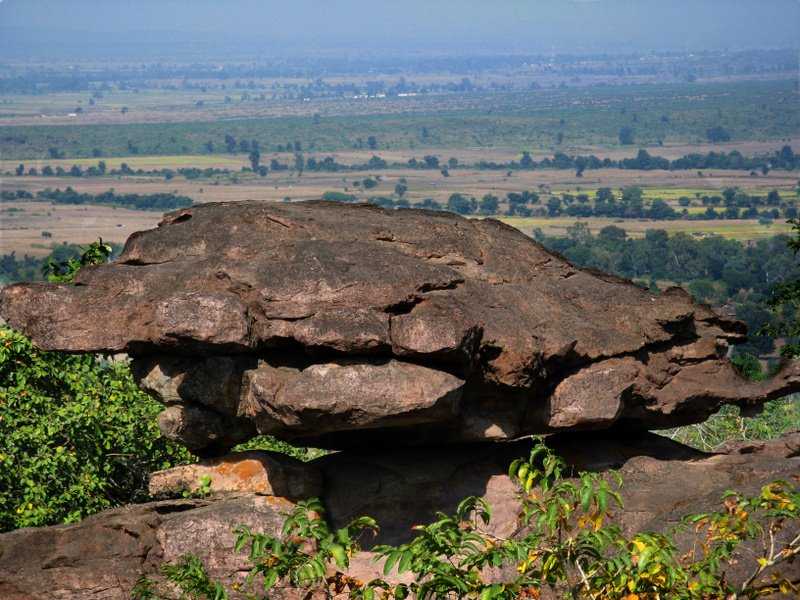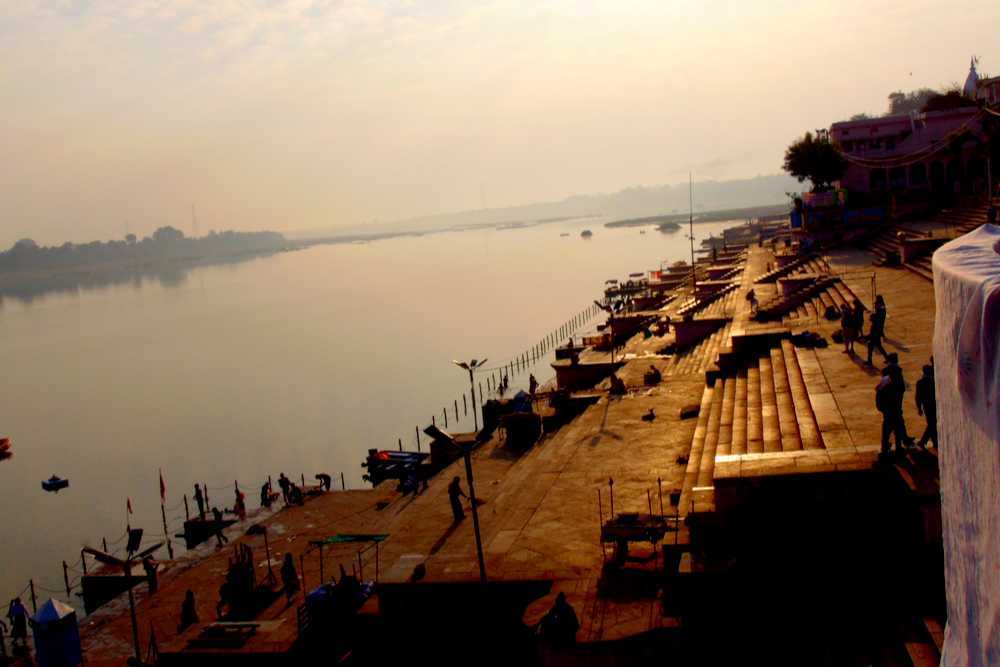UDAYAGIRI CAVES
Hello there, fellow travelers and history buffs! Are you tired of the same old tourist spots that everyone else visits? Do you crave something a little more off the beaten path? Well, have I got a treat for you! Allow me to introduce you to the Udayagiri caves – a hidden gem of ancient Indian history and culture.
Located in the state of Odisha, these caves date back to the 2nd century BCE and are an intricate network of man-made and natural caves. Imagine wandering through dark tunnels, past intricate carvings and ancient inscriptions, surrounded by lush greenery and stunning views. It's like something out of an Indiana Jones movie!
But don't worry, you won't have to dodge any booby traps or face off against any boulder-rolling giants here. Instead, you'll be treated to a fascinating glimpse into the lives and beliefs of ancient Jain and Buddhist monks. And let's be real – who doesn't love a good monk story?
Plus, with its relatively unknown status, you'll likely have these awe-inspiring caves all to yourself. Just imagine the Instagram-worthy photos you'll get without having to fight off hoards of other tourists!
So what are you waiting for? Pack your bags, grab your camera (and maybe some bug spray), and head on over to Udayagiri for a truly unforgettable adventure!
Table of Contents
- Introduction
- History and Culture of Udayagiri Caves
- How to Reach and getting around Udayagiri Caves
- Weather of Udayagiri Caves
- Places to Visit in Udayagiri Caves
- Food Options and Local Cuisine of Udayagiri Caves
- Best areas for Accommodation in Udayagiri Caves
- Shopping in Udayagiri Caves
- Nightlife in Udayagiri Caves
- Festivals and Events in Udayagiri Caves
- Tips for Travelers travelling to Udayagiri Caves
- FAQs
History and Culture of Udayagiri Caves
The Udayagiri caves have an interesting history that goes back to the 2nd century BC. These caves are located in the state of Odisha in India and are known for their beautiful architecture and intricate carvings.
Legend has it that the caves were built by King Kharavela, who was known for his love of art and culture. He wanted to create a space where artists and thinkers could come together and create something beautiful.
Over the years, the Udayagiri caves became a hub of artistic activity, with many great painters, sculptors, and writers coming here to work on their craft. The caves were also used as a place of worship by many different religions, including Buddhism and Jainism.
One of the most interesting features of these caves is the fact that they were carved out of solid rock. This took many years to complete, but the end result was worth it - the Udayagiri caves are now considered one of India's most important cultural treasures.
Today, visitors can explore these amazing caves and see firsthand the incredible artwork that was created here so many years ago. Whether you're an art lover or simply interested in history, there's something for everyone at Udayagiri!
How to Reach and getting around Udayagiri Caves
By Road: The most convenient way to reach Udayagiri caves is by road. One can take a taxi or a bus from the nearby cities like Bhubaneswar or Cuttack. The journey takes around 2-3 hours depending on the traffic and road condition.
By Train: Another option to reach Udayagiri caves is by train. The nearest railway station is in Bhubaneswar, which is well-connected to major cities across India. From there, one can take a taxi or a bus to reach the caves.
By Air: If you are coming from outside India, then the best way to reach Udayagiri caves is by air. The nearest airport is in Bhubaneswar, which has regular flights from major cities like Delhi, Mumbai, Kolkata, and Bangalore.
Self-Drive: For those who love adventure and want to explore the scenic beauty of Odisha, self-drive can be an exciting option. One can rent a car or a bike from Bhubaneswar and drive down to Udayagiri caves. However, it is advisable to have prior experience of driving on Indian roads as they can be quite chaotic.
Public Transport: If you are on a budget and looking for an economical option, then public transport can be a good choice. There are several buses that run between Bhubaneswar and Udayagiri caves at regular intervals. The fare is quite reasonable and the journey takes around 3-4 hours.
In conclusion, reaching Udayagiri caves is easy and convenient with multiple options available for travelers. Whether you prefer road travel or air travel, there are plenty of choices to suit your needs and budget. So plan your trip today and explore this fascinating UNESCO World Heritage Site!
Weather of Udayagiri Caves












 Extreme Winters
Extreme Winters Mild Winters
Mild Winters Hot + Dry
Hot + Dry Hot + Humid
Hot + Humid Rainy
Rainy Cool and Pleasant
Cool and PleasantUdayagiri caves are located in the state of Madhya Pradesh in India. The weather of Udayagiri caves is tropical, with hot summers and mild winters. The monsoon season starts from June and lasts until September, bringing heavy rainfall to the region. The temperature during summers can go up to 45 degrees Celsius, making it uncomfortable for tourists to explore the caves.
The best time to visit Udayagiri caves is from October to March when the weather is pleasant and mild. During these months, the temperature ranges between 15 and 25 degrees Celsius, making it ideal for sightseeing and outdoor activities. Moreover, the foliage around the caves is lush green during this time, adding to its beauty.
Visiting Udayagiri caves during winters is also a good option as the temperature drops further, making it perfect for those who prefer cooler weather. However, tourists should avoid visiting during summers as it can be quite challenging due to the scorching heat.
In conclusion, if you plan to visit Udayagiri caves anytime soon, make sure you choose the right time of year. October to March is undoubtedly the best time to visit Udayagiri Caves due to its pleasant weather conditions that make exploring these historic caves an unforgettable experience.
Places to Visit in Udayagiri Caves
Rani Gumpha - This cave has beautiful sculptures of Queen Jainanki and King Kharavela. The carvings depict the royal family's lifestyle and the king's military triumphs.
Ganesh Gumpha - This cave is dedicated to Lord Ganesh, and it has a massive rock-cut statue of him with four hands. The cave also has inscriptions in Brahmi script.
Chota Hathi Gumpha - This cave got its name from its elephant-like shape. It has inscriptions related to Kharavela's reign and a rock-cut bed.
Alkapuri Gumpha - This cave has a natural spring inside it, which is believed to have healing powers. The cave also has sculptures of various Hindu gods and goddesses.
Mancapuri Gumpha - This is one of the smallest caves in Udayagiri, but it's still worth visiting because of its intricate carvings on the walls and pillars.
Jaya Vijaya Gumpha - This cave is named after two doorkeepers of Lord Vishnu, Jaya and Vijaya. It has splendid carvings depicting various scenes from Hindu mythology.
Patalapuri Gumpha - This cave is unique because it has two levels, and visitors can climb down to the lower level through a narrow staircase. It also has beautiful sculptures of elephants and lions.
Panasa Gumpha - This cave gets its name from the abundance of jackfruit (panasa) trees in the area. It has a large inscription detailing King Kharavela's military conquests.
Sarpagumpha - This cave is named after the snake (sarpa) sculptures on its walls and pillars. The carvings depict various scenes from Jain mythology.
Hathi Gumpha - This cave gets its name from the elephant sculpture at its entrance, which was once used as an army stable during King Kharavela's reign. The interior walls have elaborate carvings depicting stories from Jainism.
Note: Markdown format cannot be displayed on this platform as it requires specific formatting options not available here such as headings, bold/italicized text, bullet points etc., but these descriptions can be easily formatted in Markdown using those options for better presentation elsewhere if required!
Religious Shrines
Heritage Places
Food Options and Local Cuisine of Udayagiri Caves
Best areas for accommodation in Udayagiri Caves
If you are planning to visit the historic Udayagiri caves, then finding the right accommodation is essential. Here are some of the best areas for accommodation in Udayagiri caves:
Vidya Nagar Colony: This area is just a few kilometers away from the Udayagiri caves and offers a range of hotels and lodges for visitors.
Badhavgarh Colony: Another popular area for accommodation near Udayagiri caves, this location also has plenty of options from budget to luxury hotels.
Kumhariya Colony: This area is known for its serene surroundings and comfortable lodgings, which makes it an ideal choice for family vacations.
If you are looking for the perfect place to stay during your visit to Udayagiri caves, then here are three properties that you can consider:
Luxury Accommodation - The Gateway Hotel: A five-star hotel located in Vidya Nagar Colony, The Gateway Hotel offers luxurious amenities like an outdoor pool, fitness center, and spa. The rooms are spacious and elegantly decorated with modern amenities.
Budget Accommodation - OYO 30385 Hotel Shree Sai Palace: Located in Badhavgarh Colony, OYO 30385 Hotel Shree Sai Palace is a budget-friendly option that provides comfortable rooms with all the basic amenities.
Hostel Accommodation - Zostel Gwalior: If you're traveling solo or on a tight budget, then Zostel Gwalior in Kumhariya Colony is an excellent choice. It's a cozy hostel with shared dormitories and private rooms available at affordable rates.
Overall, whether you're looking for luxury or budget accommodations near Udayagiri caves, there are plenty of options available to suit your needs.
Shopping in Udayagiri Caves
Udayagiri Caves, located in Bhubaneswar, Odisha, is a popular tourist destination known for its ancient Jain and Hindu rock-cut temples. Besides exploring the caves, visitors can also shop for some unique and traditional souvenirs. Here are some things to buy, markets to visit, and what to avoid while shopping in Udayagiri Caves.
Things to Buy
- Handcrafted items made of stone, wood, and brass
- Pattachitra paintings depicting mythological stories
- Handloom sarees and fabrics with unique designs
- Traditional Odia sweets like rasagolla and chhena poda
Markets to Visit
- Ekamra Haat - A government-run market that offers a wide range of handicrafts, textiles, and food items.
- Rajarani Haat - A weekly market that sells fresh vegetables, fruits, spices and handloom products.
- Utkalika - A popular store chain that sells authentic Odisha handicrafts.
What to Avoid
- Fake souvenirs sold by street vendors.
- Overpriced products offered by some shops inside the cave premises.
- Purchasing from unauthorized vendors outside the main markets.
- Buying endangered or prohibited wildlife products.
In conclusion, shopping in Udayagiri Caves can be a pleasant experience if you know what to buy and where to go. From traditional handicrafts to delicious sweets, there's something for everyone. However, it's essential to be cautious while shopping and avoid falling prey to scams or buying illegal items.
Nightlife in Udayagiri Caves
Udayagiri Caves are a set of ancient rock-cut caves located in the state of Odisha, India. These caves are known for their intricate carvings and beautiful sculptures that depict the rich cultural heritage of India. Apart from being a popular tourist attraction during the day, Udayagiri Caves also offer a unique and exciting nightlife experience.
The nightlife in Udayagiri Caves is quite different from what one might expect in a typical urban setting. Instead of loud music and crowded clubs, visitors can enjoy peaceful moments under the stars, surrounded by the natural beauty of the caves.
If you're planning to spend the night near Udayagiri Caves, here are three places you can consider:
Hotel Pushpak: This hotel is located just 1 km away from Udayagiri Caves and offers comfortable rooms with all modern amenities. You can enjoy a delicious meal at their in-house restaurant or relax with a drink at their bar.
Hotel Raj Kamal: Another great option for spending the night near Udayagiri Caves is Hotel Raj Kamal. This hotel offers well-furnished rooms with air conditioning, free Wi-Fi, and other amenities. They also have an in-house restaurant that serves delicious Indian cuisine.
Ratna Resort: If you're looking for something more adventurous, Ratna Resort might be just what you need. Located about 6 km away from Udayagiri Caves, this resort offers camping facilities where you can spend the night under the stars. They also have activities like trekking and bird watching to keep you entertained.
In conclusion, spending the night near Udayagiri Caves can be a unique and memorable experience. Whether you prefer luxury hotels or adventurous camping trips, there's something for everyone in this beautiful part of India.
Outdoor Activities in Udayagiri Caves
Apart from the bustling nightlife, Udayagiri caves also offer a plethora of outdoor activities for adventure enthusiasts. The caves are nestled amidst lush greenery, and the rugged terrain offers ample opportunities for trekking and hiking. The scenic beauty of the place is breathtaking, and one can take a leisurely stroll around the caves to soak in the natural surroundings.
For the more adventurous souls, rock climbing is a popular activity in Udayagiri caves. The steep cliffs and rocky outcrops provide an ideal setting for rock climbing, and experienced climbers can test their skills on the challenging routes.
Caving is another activity that attracts visitors to Udayagiri caves. The intricate network of caves provides an exciting opportunity for explorers to delve deep into the underground world. With proper guidance and equipment, caving in Udayagiri can be an unforgettable experience.
For those who want to enjoy nature at a leisurely pace, bird watching and photography are ideal activities in Udayagiri caves. The dense forests surrounding the caves are home to a wide variety of birds, including rare species like Malabar trogon and Nilgiri flycatcher.
In conclusion, Udayagiri caves offer a range of outdoor activities that cater to various interests and skill levels. From trekking to caving, there is something for everyone in this natural wonderland. So pack your bags and head over to Udayagiri for an unforgettable adventure!
- Trekking
- Rock Climbing
- Caving
Festivals and Events in Udayagiri Caves
Festivals and events play a significant role in the cultural heritage of Udayagiri caves. These events are a great way to celebrate the rich history, culture, and traditions of this ancient site. The following are some of the notable festivals and events that take place in Udayagiri caves:
Makar Sankranti (January): It is celebrated on 14th January every year to mark the beginning of the harvest season. People gather here to offer prayers, perform rituals and fly kites.
Holi (March): This festival signifies the victory of good over evil. It is celebrated with great enthusiasm by smearing colors on each other and dancing to traditional music.
Buddha Purnima (May): This festival commemorates the birth, enlightenment, and death of Lord Buddha. People visit Udayagiri caves to offer prayers and seek blessings.
Raksha Bandhan (August): This festival celebrates the bond between brothers and sisters. Sisters tie rakhi on their brother's wrist as a symbol of love and protection.
Diwali (November): It is known as the "festival of lights" and signifies the victory of light over darkness. People light lamps, decorate their homes with lights, burst firecrackers, exchange sweets and gifts.
Apart from these festivals, there are also cultural events like music concerts, dance performances, art exhibitions held throughout the year at Udayagiri caves. These events showcase local talent while promoting tourism in this region. Visiting Udayagiri during these festivals and events gives visitors an opportunity to witness India's diverse culture and traditions firsthand.
Tips for Travelers while travelling to Udayagiri Caves
- Plan ahead: Before embarking on your journey to Udayagiri caves, it is essential to plan ahead. Make sure to check the weather forecast and prepare accordingly. It is also advisable to book your accommodations in advance, especially during peak tourist season.
- Dress appropriately: As Udayagiri caves are a religious site, it is important to dress modestly and respectfully. Avoid wearing revealing clothing or anything that may be deemed disrespectful. It is also recommended to wear comfortable shoes as there are steep steps and uneven terrain.
- Respect the site: The Udayagiri caves are a sacred site for many Hindus, so it is important to be respectful of the surroundings. Avoid littering or damaging any part of the site. Photography may be allowed in certain areas, but make sure to ask for permission before taking pictures.
- Stay hydrated: Exploring the caves can be physically demanding, so it is crucial to stay hydrated throughout your visit. Bring a reusable water bottle with you and refill it at the designated water stations within the site.
- Be mindful of festivals and events: If you are visiting Udayagiri caves during a festival or event, be mindful of the increased crowds and potential traffic congestion. Plan your visit accordingly and consider arriving early or later in the day to avoid large crowds. It is also important to respect any customs or traditions associated with these events.
In summary, traveling to Udayagiri caves requires careful planning and respectful behavior towards the site's cultural significance. By following these tips, travelers can ensure an enjoyable and memorable experience while exploring this ancient wonder of India.
FAQs
What are Udayagiri caves?
Udayagiri caves are a group of rock-cut caves located in the hills of Udayagiri, near Bhubaneswar in Odisha, India. These caves are famous for their historical and religious significance.
How many caves are there in Udayagiri?
There are 18 caves in Udayagiri, which were excavated during the 1st century BCE to the 10th century CE.
Who built the Udayagiri caves?
The Udayagiri caves were built by the kings of the Gupta and Kalinga dynasties. The exact builders of each cave are not known as some of them do not have inscriptions.
What is the significance of Udayagiri caves?
The Udayagiri caves have significant historical and religious value, as they depict various forms of art, architecture, and iconography. These caves also serve as evidence of ancient Indian civilization and culture.
What can we see in the Udayagiri caves?
The Udayagiri caves contain intricate carvings, sculptures, and inscriptions. Some notable features include a Jain temple with a seated statue of Lord Rishabhanatha, a rock-cut elephant sculpture, and an inscription that mentions King Kharavela.
How much time does it take to explore the Udayagiri Caves?
It takes around two to three hours to explore all 18 caves at Udayagiri thoroughly. However, if you want to examine each detail closely or study the inscriptions deeply, you might need more time.
Is there any entry fee for visiting the Udayagiri Caves?
Yes, there is an entry fee for visiting the Udayagiri Caves. For Indian citizens, it costs INR 25 per person while foreign nationals need to pay INR 300 per person. However, children below five years old can enter for free.
